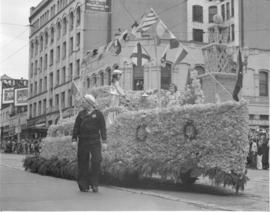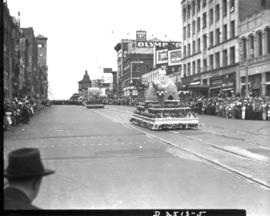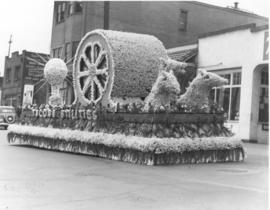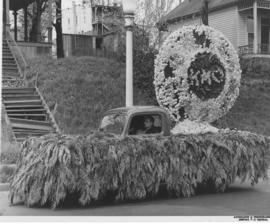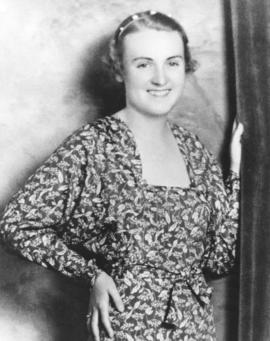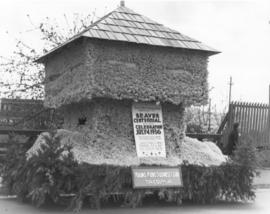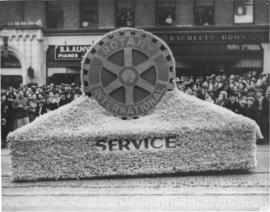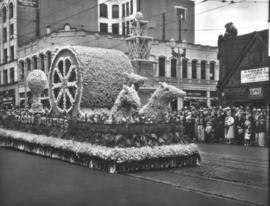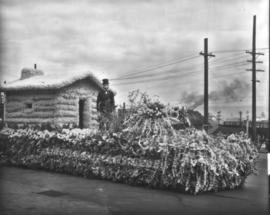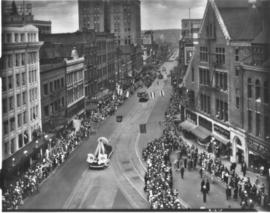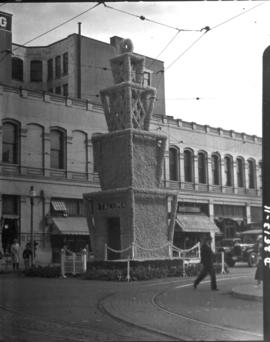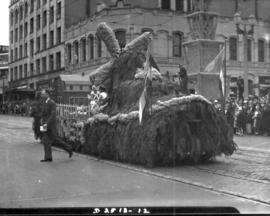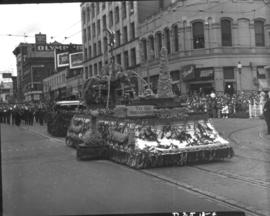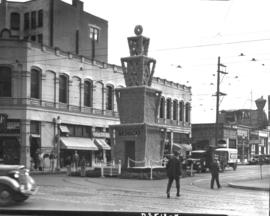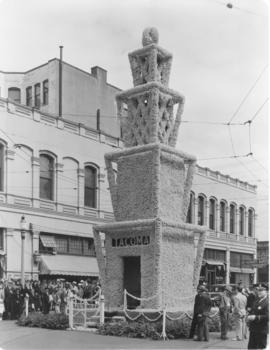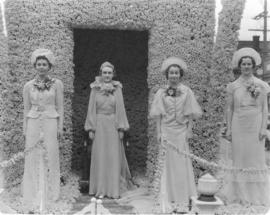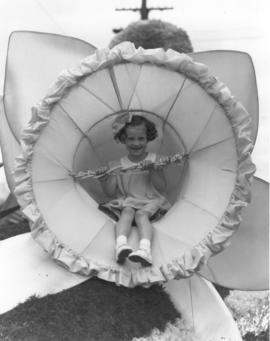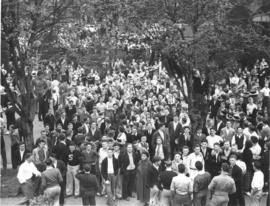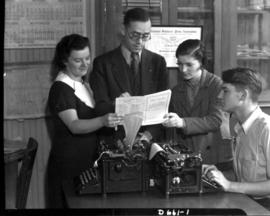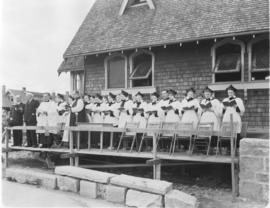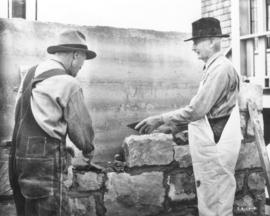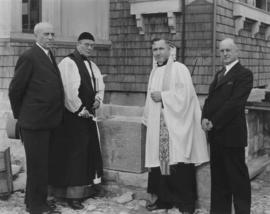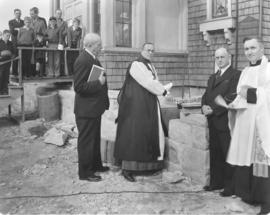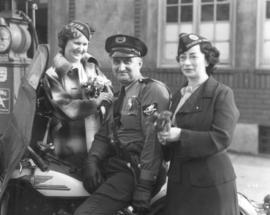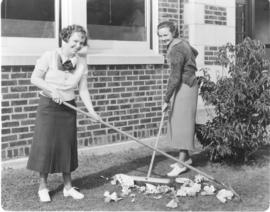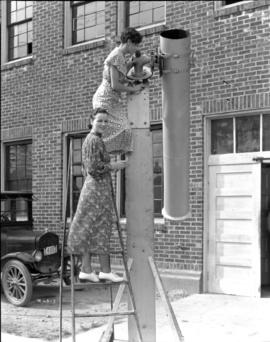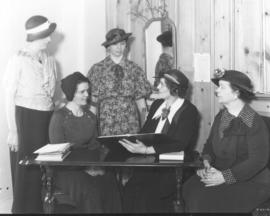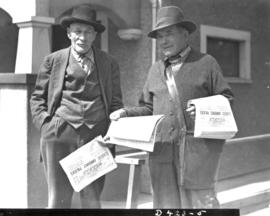Buddy Poppy Days were being observed in Bremerton beginning May 22, 1936 and Ernie Roy, city traffic Patrolman, was happy to do his part by purchasing two of the tiny red flowers. Ruth Howard, left, poppy chairman for the auxiliary to the Veterans of Foreign Wars, Admiral Robert E. Coontz Post No. 239, and Flo Hatfield, chairman for the auxiliary to American Legion Post No. 149, were ready to do their part raising money for the welfare of disabled war veterans. The sale of poppies as a fund raiser goes back to the early twenties. A poem entitled "In Flanders Field" evoked a battlefield of white crosses dotted with red poppies, "In Flanders Field the poppies blow, Between the crosses, row on row..." The poem touched the nation and poppies became known as the wartime memorial flower, a tribute to those who lost their lives defending our freedoms. In 1922, the VFW conducted its first poppy sale and the poppy was adopted as the official memorial flower of the VFW. The proceeds from the sale are used to support veterans' programs, the VFW makes no profit from the sale. (Bremerton Sun 5/22/1936, pg. 1)
Fund raising--Bremerton--1930-1940; Patriotic societies--Bremerton; Veterans' organizations--Bremerton; Veterans of Foreign Wars, Post 239, Women's Auxiliary (Bremerton); American Legion, Post 149 (Bremerton); Roy, Ernie; Howard, Ruth; Hatfield, Flo;
